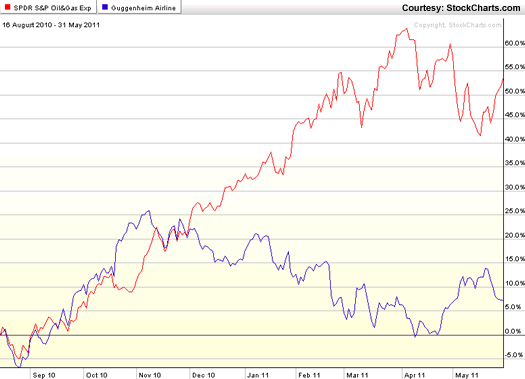Trade These 4 ETFs Based On Trends (PFF AAXJ BKLN UUP)
Post on: 16 Март, 2015 No Comment

ETFs provide traders access to baskets of stocks, indexes, assets and global markets. ETFs move like stocks and therefore should be traded in a similar way. Accordingly, there are more favorable times to buy and sell (relatively speaking) based on the tendencies of a trend. These four ETFs, representing diverse markets, present near-term trading opportunities; some to the upside and others to the downside.
The iShares US Preferred Stock ETF (PFF ) trending higher within a channel. The ETF recently tested the lows of the channel near $39, and so far that support region has held. A higher low in late December indicates potential buying pressure, and the move above $39.25 on Dec. 29 confirms this. Stop losses are placed below $39, with price target between $40 and $40.10, the top of the current channel. On an unadjusted basis the ETF is moving more within a range; that’s because the ETF pays a 6.91% dividend yield. The trade is structured in such a way that traders can potentially capture dividends, as well as make two or three to one on the risk (difference between entry price and stop loss level) if the target is reached. (For more, see: Buying the Upward Trend Channel Bounce .)
The PowerShares Senior Loan ETF (BKLN ) is trending lower since August. It rallied from $23.50 to $24 in mid-December, but has since seen its price consolidate. A drop below $23.90 signals another down wave could be underway. Place a stop above $24.04 with a target at $23.50. There are two potential dangers here: The first is that the rally may not be complete; another wave higher is possible, like what occurred in October. The trade is also going against the dividend. The current dividend yield is 4.1%; being short the fund means any dividends paid out while holding the short position will be deducted from the profit (or added to the loss) of the trade. (For more, see: 6 Common Misconceptions about Dividends .)
The iShares MSCI All Country Asia ex Japan ETF (AAXJ ) topped out at $66.57 in September and has been in a downtrend since. The late December rally hasn’t yet reached the descending trendline. so there may still be some short-term upside remaining. Overall though, the region between $62 and $63 and is a strong sell zone, and if the price declines below $60.17 before reaching that area, that too is a sell signal. If the price continues higher from here the stop loss goes above the November high of $63.48; if it moves below $60.17 from here the stop loss goes above $61.27. The target is $58.50, just above the December low. If the price continues to push higher the risk/reward is more favorable than if the price declines from here (current price $60.67).
The PowerShares DB US Dollar Bullish ETF (UUP ) trade requires more patience. The trend is strongly up since July, but currently the price is near the top of its trend channel. It could go higher, breaking above the channel or creeping along the upper trendline, yet based on the tendency waiting for a pullback to the $23.50 region is a more prudent trade. If a pullback develops, a stop loss can be placed below $23.27, the December low, or alternatively below $23.20 to give a bit more room. The upside target — should the channel continue — is between $24 and 24.10, just beyond the Dec. 29 high.
Loading the player.
Instead of simply placing a pending entry order in the buy zone, it’s better to wait for the price to pullback, consolidate and then break higher again before entering. In this way, if the price continues to drop right through the aforementioned buy zone, the losing trade is avoided. (For more, see: Consolidations Ready for a Break Higher .)














